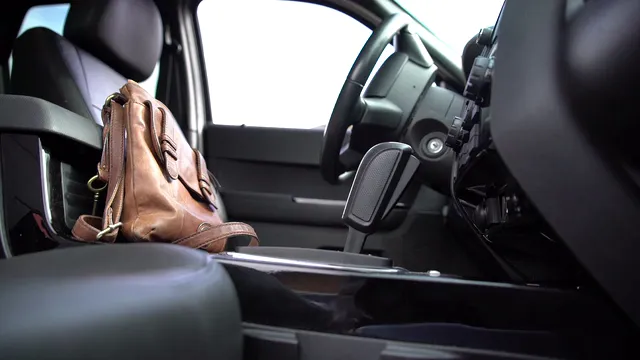Introduction
Understanding crime statistics in Lowell, MA, is crucial for both residents and newcomers. Knowledge of crime rates helps individuals make informed decisions about safety and community living. If you’re considering a move or just curious about the area, these statistics can provide valuable insights.
The data presented here is based on the 2022 crime statistics, recently released in 2023. This comprehensive overview draws from reliable sources, including law enforcement agencies across the U.S. The information reflects a mix of violent and property crime trends, aiming to paint an accurate picture of Lowell’s safety landscape.
In this article, you can expect to find detailed crime statistics, comparisons to national averages, and insights into community perception. We’ll break down the numbers, explore yearly trends, and provide context to help you understand Lowell’s unique situation. Buckle up for an informative ride through Lowell’s crime landscape!

Overview of Lowell’s Crime Statistics
Crime Rate Overview
Lowell’s total crime rate stands at 22 per 1,000 residents, exceeding the national average. Your chance of becoming a victim? About 1 in 45. That’s a bit like rolling the dice, but unfortunately, it’s not the lucky kind of gamble!
In 2022, Lowell reported a staggering total of 2,531 crimes. When we categorize these crimes, it breaks down to 468 violent crimes and 2,063 property crimes. The violent crime rate is around 4 per 1,000 residents, while property crimes are significantly higher at approximately 18 per 1,000 residents.
Compared to Massachusetts as a whole, Lowell’s crime rate is higher than 96% of the cities and towns within the state. To put that into perspective, if you were to line up your neighbors, chances are most would agree that safety is a top concern.
In conclusion, while Lowell offers many attractions and a rich community life, the crime statistics indicate a need for awareness and caution. Understanding these numbers helps residents and potential newcomers navigate their safety and community engagement. Stay tuned as we delve deeper into the specifics of Lowell’s crime trends!

Yearly Crime Trends
Year-over-year changes in crime rates can tell a compelling story. In Lowell, recent years have shown a notable fluctuation in criminal activity. According to sources like AreaVibes, City-Data, and NeighborhoodScout, crime rates in Lowell have seen an increase, which raises eyebrows and questions about community safety.
In 2022, Lowell reported a total crime rate of 22 per 1,000 residents, exceeding the national average. This marked an alarming increase of 30.4% from the previous year. Violent crime alone grew by approximately 24.3%. With such significant shifts, it’s essential to investigate the underlying factors contributing to these trends.
According to NeighborhoodScout, the total number of reported crimes was 2,531, with violent crimes accounting for 468 incidents. These statistics highlight a complex landscape where crime rates are not just numbers but involve real lives and community concerns.
AreaVibes provides additional insight, noting that the violent crime rate of 4 per 1,000 residents is particularly concerning. Notably, certain neighborhoods are more affected than others, leading to heightened vigilance among residents. The fluctuations underscore the need for robust community engagement and proactive law enforcement strategies.
City-Data also adds context by indicating that while some areas of Lowell experience higher crime, others remain relatively safe. The perception of safety among residents varies, with polls indicating that about 69% feel some level of concern about crime. This perception plays a crucial role in shaping community dynamics and responses to crime trends.
The alarming increase in crime rates compels us to consider not just the statistics, but also the social fabric of Lowell. As the city adapts to these changes, the importance of awareness, community involvement, and effective policing cannot be overstated. Residents must remain informed and engaged to foster a safer environment for everyone.

When it comes to safeguarding your home, investing in a Home Security Camera System can be a game-changer. Not only does it provide peace of mind, but it also helps deter potential intruders. Imagine relaxing at home, knowing you have an eye on your property—it’s like having a trusty watchdog without the barking!
For detailed insights into the crime statistics in Lowell, refer to the Lowell crime statistics.

Violent Crime Statistics
Breakdown of Violent Crimes
Lowell’s violent crime statistics present a clearer picture of the challenges the community faces. Here’s a detailed breakdown of violent crimes reported in 2022:
- Murder: 6 incidents (Rate: 0.05 per 1,000 residents)
- Rape: 24 incidents (Rate: 0.21 per 1,000 residents)
- Robbery: 75 incidents (Rate: 0.66 per 1,000 residents)
- Assault: 363 incidents (Rate: 3.20 per 1,000 residents)
To put these numbers into perspective, let’s look at the implications of these rates on community safety. The murder rate, while lower than some urban areas, still raises concern. Six murders in a year can significantly impact community morale. Rape and robbery, too, pose profound challenges that require vigilant response strategies.
The assault statistics present a particularly pressing issue. With 363 assaults reported, that’s an average of nearly one assault per day. This reality can cultivate an atmosphere of fear and anxiety among residents. When people feel unsafe, it disrupts the very fabric of community life.

Comparison to National Averages
Now, let’s compare Lowell’s violent crime statistics against national averages and nearby cities. According to the FBI, the national average for violent crimes is approximately 370 incidents per 100,000 people. Lowell’s violent crime rate of 402 per 100,000 residents is notably higher.
When comparing Lowell to nearby cities like Dracut and Chelmsford, the contrast becomes even more pronounced. For instance, Dracut reports a significantly lower violent crime rate, making it a more appealing option for those concerned about safety.
Polls conducted among Lowell residents reveal varying perceptions of safety. About 50% reported feeling “pretty safe,” while 28% acknowledged noticeable concerns. This mixed sentiment highlights a community grappling with its identity in the face of rising crime rates.
In summary, while Lowell’s violent crime statistics may not paint a rosy picture, they serve as a call to action. Community leaders, law enforcement, and residents must collaborate to address these issues head-on. Safety is not just a statistic; it’s a fundamental right that every resident deserves.

Community Responses to Violent Crime
Lowell has faced its share of challenges concerning violent crime. The police department and community organizations have stepped up their game. Their efforts aim to tackle crime head-on and bolster safety for residents.
The Lowell Police Department employs a multifaceted approach. They prioritize community policing. This strategy enhances relationships between officers and the community. Regular town hall meetings provide a platform for residents to voice concerns. Police officers attend these sessions, fostering trust and transparency.
In addition to community policing, several initiatives focus on crime prevention. For example, the “Safe Streets” program engages local youth. It provides mentorship and activities that steer them away from crime. By investing in the youth, the community aims to create a safer environment for all.
To further enhance personal safety, consider keeping a Personal Safety Alarm handy. This little gadget can be a lifesaver, emitting a loud sound to alert others in case of an emergency. You might just feel like James Bond with your own safety device—minus the tuxedo, of course!
The Lowell Police also release annual crime reports. These reports detail statistics and highlight trends. Such transparency allows the community to understand the crime landscape better. The latest report showed a 30.4% increase in total crimes, raising alarms. However, it also emphasizes the determination of the police and community to combat this rise.

Property Crime Statistics
Breakdown of Property Crimes
Lowell’s property crime statistics provide an essential perspective on community safety. In 2022, the city reported a total of 2,063 property crimes. This figure translates to a staggering rate of approximately 18.16 per 1,000 residents. Let’s break it down further:
- Burglary: 252 incidents (Rate: 2.22 per 1,000 residents)
- Theft: 1,610 incidents (Rate: 14.17 per 1,000 residents)
- Motor Vehicle Theft: 201 incidents (Rate: 1.77 per 1,000 residents)
These numbers highlight specific areas of concern. Theft dominates the statistics, making up about 78% of all property crimes. This reality can create anxiety among residents, particularly those who rely on their vehicles for daily activities.

To help deter theft, consider installing a Smart Home Security System. With features like remote monitoring and alerts, you can keep an eye on your property from anywhere. It’s like having your own security team—without the need for a budget-wrecking salary!
Comparison to National Averages
When comparing Lowell’s property crime rates to national averages, the differences become apparent. Nationally, the average property crime rate is around 35.4 per 1,000 residents. In contrast, Lowell’s rate sits lower at approximately 18.16. This indicates that while property crimes are a concern, Lowell is somewhat more secure in this aspect than many other cities.
However, this does little to alleviate the concerns of residents. A survey conducted by AreaVibes indicates that 69% of residents express safety concerns. In addition, about 1 in 55 residents faces the risk of becoming a victim of property crime. This reality can lead to a pervasive sense of unease within the community.
Despite the statistics showing a lower property crime rate than the national average, the perception of safety remains a critical issue. Residents often weigh these numbers against personal experiences and anecdotal evidence. Therefore, even with lower statistics, the psychological impact of crime can be significant. Community engagement and police initiatives play a crucial role in addressing these feelings and fostering a safer environment for all.

Neighborhood Safety in Lowell
Safest and Most Dangerous Neighborhoods
Lowell boasts a mix of neighborhoods, each with its own safety profile. The safest neighborhoods in Lowell include Belvidere, Highlands, and Pawtucketville. Belvidere, for instance, is known for its well-maintained parks and community involvement. Residents here often take pride in their surroundings, fostering a sense of unity and vigilance. The Highlands neighborhood also enjoys a reputation for safety, thanks to active neighborhood watch programs and a tight-knit community.
On the flip side, areas like The Acre and Centralville have higher crime rates. Factors contributing to their elevated crime statistics include higher population density and economic challenges. Residents in these neighborhoods often express concerns about property crime, such as theft and burglary, which can disrupt their daily lives.
The crime map shows distinct patterns, with safer neighborhoods often featuring more community resources and engagement. Residents in these areas typically feel more secure, thanks in part to active policing and neighborhood watch initiatives.

Community Insights
Community sentiment about safety varies across Lowell. According to recent surveys, about 69% of residents express concerns over crime. Many feel uneasy walking alone at night, particularly in neighborhoods with higher crime rates. Interestingly, 50% of respondents reported feeling “pretty safe” overall, indicating that perceptions of safety are nuanced.
Local organizations play a crucial role in addressing these concerns. The Lowell Police Department frequently collaborates with community groups to host safety workshops and forums. These events allow residents to voice their fears and receive practical safety tips. Additionally, initiatives like neighborhood clean-ups aim to foster pride and ownership in the community, which can positively impact safety.
Engagement between law enforcement and residents is vital. Officers often attend community meetings, providing updates on crime trends and prevention strategies. This transparency helps build trust and encourages residents to report suspicious activities.
In summary, while some neighborhoods in Lowell face challenges, proactive community efforts and open communication with law enforcement are paving the way for enhanced safety. Residents are increasingly taking charge, shaping a safer environment for everyone.

Nearby Communities and Their Crime Rates
Comparison to Neighboring Cities
Understanding Lowell’s crime statistics is essential, but it’s equally important to compare them with nearby towns. Let’s take a look at how Lowell stacks up against Dracut, Chelmsford, and Tewksbury.
Dracut, just a stone’s throw away, boasts a significantly lower crime rate. With a violent crime rate of approximately 94.4 per 100,000 residents, it’s a safer haven for families looking for peace of mind. In contrast, Lowell’s violent crime rate hovers around 402 per 100,000. That’s a difference you can’t ignore!
Chelmsford follows closely behind Dracut, with a crime rate of about 96.5 per 100,000. Its community feels relatively safer, as highlighted by local surveys where residents express higher satisfaction regarding safety. Tewksbury, on the other hand, presents a mixed bag. The town’s crime rate stands at 257.8 per 100,000, indicating a need for caution.
These comparisons reveal a broader context for understanding Lowell’s crime rates. While Lowell grapples with higher statistics, its neighbors exhibit more favorable conditions. This knowledge can help residents make informed decisions about their safety and community involvement.

Community Resources
Lowell is not alone in facing safety challenges; nearby communities also share similar concerns. Fortunately, several resources are available for residents seeking to enhance their well-being.
First off, the Lowell Police Department actively engages with the community through programs designed to promote safety. Their “Safe Streets” initiative focuses on youth mentorship, aiming to deter crime before it starts. This proactive approach is mirrored in neighboring towns, where local law enforcement emphasizes community policing.
In addition, residents can tap into various hotlines and community safety programs. The Lowell Community Health Center offers mental health resources, including counseling for those affected by crime. Furthermore, organizations like the Massachusetts Alliance of Boys and Girls Clubs provide safe spaces for youth, helping them stay engaged in positive activities.
For residents looking for immediate assistance, there are local hotlines available. The Massachusetts Domestic Violence Hotline offers support for individuals facing domestic challenges, while the Lowell Police Department provides emergency contacts for various concerns.
As a precaution, consider investing in a Door Lock with Keypad. It adds an extra layer of security, allowing you to enter your home without fumbling for keys—plus, it can keep out unwanted guests! Who needs a castle when you have a keypad lock?

By leveraging these resources, residents can contribute to a safer environment. Community engagement and awareness are vital in addressing crime effectively. Remember, safety is a shared responsibility, and together, we can make Lowell and its neighboring towns safer places to live!
Conclusion
In summary, Lowell’s crime statistics present a complex picture for residents. With a total crime rate higher than national averages, it’s vital for everyone to stay informed. The statistics highlight not just numbers but the real impact on community life.
Lowell’s comparative crime rates against its neighboring towns, like Dracut and Chelmsford, emphasize the need for vigilance. Residents should engage with local law enforcement and community programs to foster a safer environment. Efforts from organizations and the police department show a commitment to enhancing community safety.
Moreover, ongoing discussions about crime and safety are crucial. Residents must voice their concerns, participate in community programs, and remain alert. Awareness and proactive engagement can help mitigate crime effectively.
By investing in community relationships and resources, Lowell can pave the way for a brighter, safer future. Residents, stay vigilant and connected; your engagement matters! Together, let’s continue to foster a welcoming and safe environment for all.
FAQs
What are the chances of becoming a victim of crime in Lowell?
In Lowell, the odds of becoming a crime victim are approximately 1 in 45. This statistic is a reminder of the importance of awareness and caution in daily life.
How does Lowell’s crime rate compare to other Massachusetts cities?
Compared to other cities, Lowell’s crime rate is significantly higher. For instance, Dracut’s crime rate is around 94.4 per 100,000 residents, while Lowell’s is approximately 402 per 100,000.
What measures are being taken to improve safety in Lowell?
Local initiatives include community policing efforts and programs aimed at youth engagement, such as the “Safe Streets” initiative. These programs foster trust between law enforcement and residents.
Are certain neighborhoods safer than others?
Yes, neighborhoods like Belvidere and Highlands are noted for their safety, while areas such as The Acre and Centralville experience higher crime rates. Each neighborhood’s unique characteristics contribute to its safety profile.
Where can I find more detailed crime data for Lowell?
For more specific information, resources like NeighborhoodScout and local law enforcement websites offer comprehensive crime data and analysis. These platforms can provide deeper insights into Lowell’s crime trends and statistics.
Before you leave, don’t forget to grab a Emergency Survival Kit. You never know when a little preparedness might come in handy—like when your neighbor’s cat decides to take a stroll through your garden and you need to defend your herbs!
Please let us know what you think about our content by leaving a comment down below!
Thank you for reading till here 🙂
All images from Pexels




